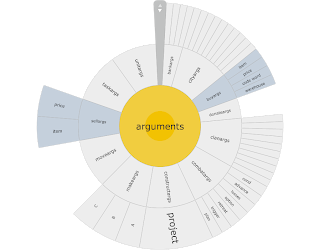I am a big fan of mind mapping. I usually start working out what's going to be involved in a project in a mind-mapping tool like Mindomo. I have even tried to track a project (what is complete, who owns what needs to be done, how done is it) using a mind map...with pretty poor success. A mind map node doesn't know anything about the state of its children, except that they are there, so there was a lot of repetitive bookkeeping for me in updating how done things were.
I am working on a project right now for a great old turn-based game called Midgard. It's a sort of medieval-with-some-magic political-struggle game where you start out with a couple of friends and a couple hundred retainers and try to make something of yourself in a huge and often hostile world. You are asking, why play a game when I can get that at home for free, and it's a valid question. Which I can't really answer right now, but I will return to it in a future post.
Anyhow, one of the painful aspects of Midgard is entering your actions on the turn sheet in the correct syntax. You can use as many as 30 actions per turn, and each action can have as many as five arguments. "City - Warehouse - Load - [warehouse #] - [quantity] - [item]" and actions like it are very easy to set down in the wrong order.
So I am building the Midgard Turn Builder. Basically, what you choose as the first part of each action governs what the Turn Builder will let you choose or enter for all the other arguments. When this finally gets working, it should reduce blood pressure readings all across the player community, and probably cut the turn processing time dramatically.
I will post again about the Turn Builder as it develops (you are free to go visit now, but the turnsheet screen is only partially hooked up. Come back June 1), but right now I want to show you how I am keeping track of everything I have to do.
I started with a mind map, as is my wont. Here is what it looked like at an early stage:
All the little branches represented things I thought of and tried to organize by some sort of logical method. But how to track what was done, and what needed doing next?
I recently found Goalscape, and it is proving a huge help in tracking the project. Goalscape displays the project as circles within circles. The innermost circles are the general categories, and their 'children' are the tasks within those categories:
The parents know about the status of their children, so as you record progress on a child task, the parent task gets proportionately colored in.
See that orange little thing? I can zoom in on it and see all those little children in a readable way:
Looks like I have some work to do on the code that handles the action arguments!
There are features I am not using yet, because this is a one-person project; however, Goalscape lets you assign deadlines and task owners. It is a young tool, so I bet cool additions are coming soon.
If you have a tangled project, consider flattening it out with Goalscape.



3 comments:
Freemind never really did it for me, but I can see LOTS of benefits to using the Goalscape structure in creating lesson plans for study units. I can take the "big learning" that the unit is supposed to cover, and identify the smaller lessons within each concept, as well as the lessons that need a scaffolding structure. Thank you!
I still use mind mapping when I am exploring a project, so I can just throw ideas onto the map without worrying too much about where they belong. But once I start to have a sense of what is where, out comes Goalscape.
It is a young product, and I am looking forward to the features they will add to it.
I showed it to the IT guys at school, but they weren't at all impressed because it's not freeware. They tried to turn me right back towards mind maps...but I just don't like those as much as the integrated completion tracking in Goalscape. Guess I'll just have to buy my own copy. Pity. I was hoping to make it available to my students.
Post a Comment